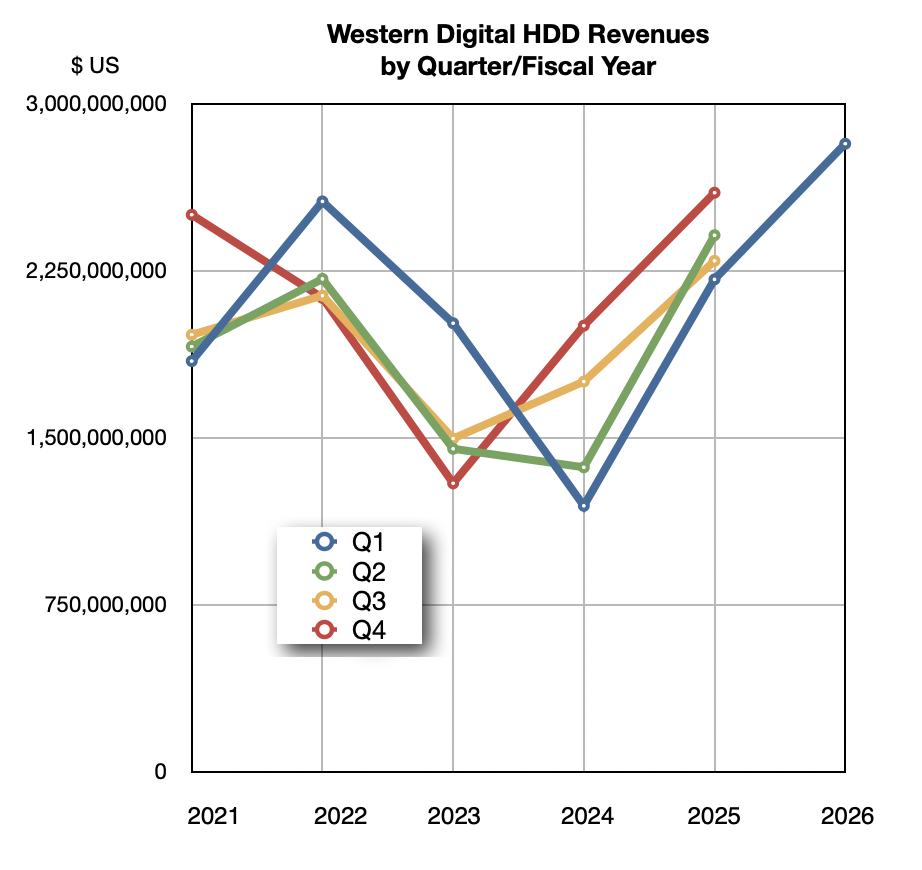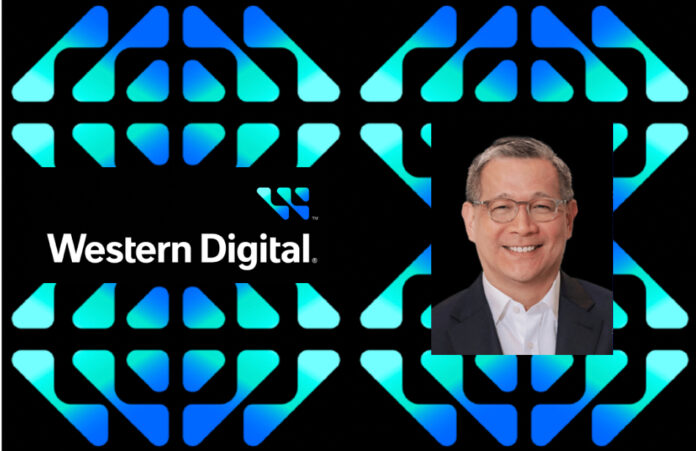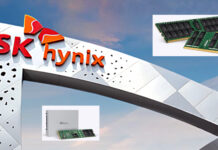Western Digital’s revenues for Q1 of its fiscal 2026 – ended October 3 – jumped 27 percent year-on-year to $2.82 billion on the back of hyperscalers buying nearline disk drives, and net income shot up 140 percent to $1.18 billion.

CEO Tiang (Irving) Tan stated: “Western Digital continues to execute well in a strong demand environment driven by growth of data storage in the cloud. In our fiscal first quarter, we achieved revenue and gross margin above the high end of our guidance range, while delivering strong free cash flow.”
Financial summary:
- Gross margin: 43.5% vs 41.0% in prior quarter
- Operating cash flow: $672 million, down from prior quarter’s $746 million
- Free cash flow: $599 million vs last quarter’s $675 million
- Cash and cash equivalents: $2.05 billion vs prior quarters $2.1 billion
- Diluted EPS: $3.07 vs last quarter’s $0.67
CFO Kris Sennasael said: “The upside in revenue was mostly driven by great execution by our manufacturing operations organization, pushing really hard on the supply side and improving yields.” Price increases also helped, with the market buying more product than manufactuers – WD and Seagate – could make, as did customers’ move to higher-capacity drives.

WD increased its quarterly cash dividend by 25 percent to $0.125/share and has upped share repurchases to $553 million. On an earnings call, a financial analyst asked: “Storage demand is off the charts. And part of the great narrative for the HDD industry is an oligopoly acting very rational with supply.” The oligopoly being Seagate and Western Digital.
Like rival Seagate, WD aims to meet exabyte demand by increasing areal density (drive capacity) rather than by building new HDD factories. Instead it will raise output from its existing plants. Tan said: “We’re also looking at increasing our manufacturing throughput by leveraging more automation, AI tools … and also enhancing our test capabilities. This increase in productivity of our existing footprint will enable us to deliver more exabytes to our customers as well.”
Tan emphasized this point saying he wanted to be: “very clear about one statement, we are not adding any unit capacity to our portfolio right now.”
Just 11 percent of WD’s disk drive revenues came from client (5%) and consumer (6%) product sales. The rest, 89 percent, was generated by public and private clouds buyers. Tan said: “As agentic AI begins to scale at several industries and multimodal LLM become the norm, we are seeing a steady acceleration of AI use cases and applications, driving robust ongoing demand for the data infrastructure that enables this growth.”
”our customers are providing greater visibility into their long-term needs … Our top seven customers have now provided purchase orders extending throughout the first half of calendar year 2026. And five of them have provided purchase orders covering all of calendar year 2026. I’m also pleased to share that one of our largest hyperscale customers has signed an agreement covering all of calendar year 2027.”
This means there is less risk in building drives and WD can try to match manufacturing output to market demand. Excess inventory costs money.
It delivered 204 EB of drive capacity in the quarter, up 23 percent, with 183 EB being nearline (high-capacity) ePMR drives, and 21 EB being client and consumer drives. It shipped 2.2 million – c70EB – of its highest capacity drives in Q1: 26 TB conventional CMR and 32 TB UltraSMR shingled drives, and expects to ship more than 3 million in Q2 of its fiscal 2026.
WD has a new generation of its ePMR drives coming and “will begin qualification of our next-generation ePMR drives in the first quarter of calendar year 2026.” These are planned to be 28 TB CMR and 36 TB UltraSMR and the qualification is scheduled for the first half of 2026. Tan hinted that the capacities might be higher.
In parallel, WD is preparing to introduce HAMR technology to increase its drive’s areal density, and hence capacity, with Tan saying: “We are making rapid progress in our HAMR development and are on track to start HAMR qualification for one hyperscale customer in the first half of calendar year 2026.” It was initially due to take place in the second half, but WD is bringing it forward,
Tan continued: “And to expand the qualification process to up to 3 hyperscale customers through calendar year 2026. … This positions us well for the ramp-up of volume production in the first half of calendar year 2027.”
The key question here is whether WD can avoid Seagate’s multi-year HAMR qualification cycles. It’s fairly certain though, that all of WD’s HAMR customers will already be using Seagate’s HAMR disks, or have gone through Seagate HAMR drive qualification. WD will be talking to buyers familiar with HAMR tech and may be able to have faster qualification as a result. Tan mentioned a 2 to 3 quarter qualification cycle before ramping up production.
WD quarterly revenues are now 7.2. percent higher than Seagate’s. The gap is widening – the difference was 6.8 percent last quarter. Seagate’s HAMR capacity lead is seemingly not a major advantage.

TAN was asked on the conference call if HDD constraints and inflating prices would encourage buyers switch to SSDs. “It’s something we look closely at as well. I think the good news is that AI … is a prolific generator of data, and therefore, more data is getting stored as the value of data increases. So all boats are rising. The demand for NAND bits, hard drive bits and even tape bits are increasing as a result. And there are specific use case that makes sense for them to use SSDs.
“But fundamentally, if you look at data center architectures and the tiering between SSDs, HDDs and tape, that is unlikely to change over time, and we anticipate that HDDs will continue to remain roughly about 80 percent of the bits that start within the data center.”
As for the Q2 forecast, Tang said: “We expect continued revenue growth driven by data center demand and improved profitability led by the adoption of higher capacity drives.” The outlook is for more growth, but at a lower rate, with revenues of $2.9 billion +/- $100 million, representing a 20.4 percent increase over the year-ago quarter.








